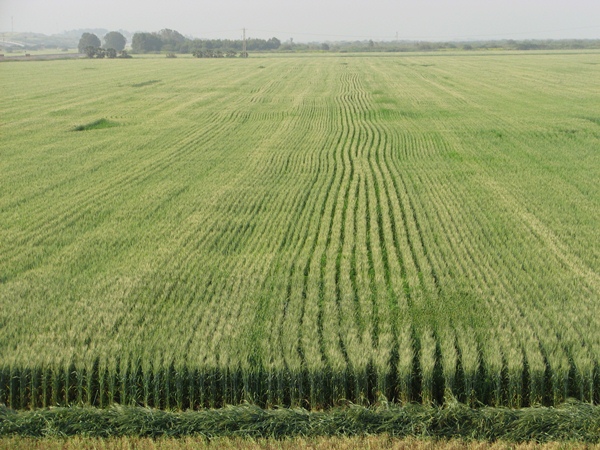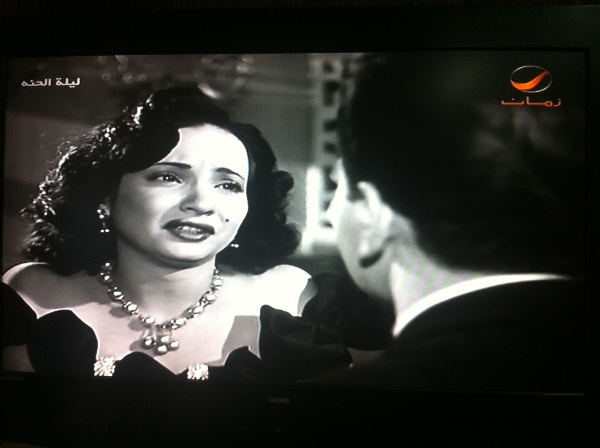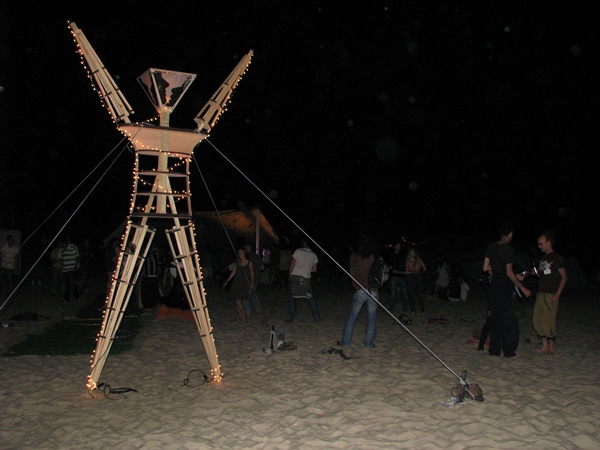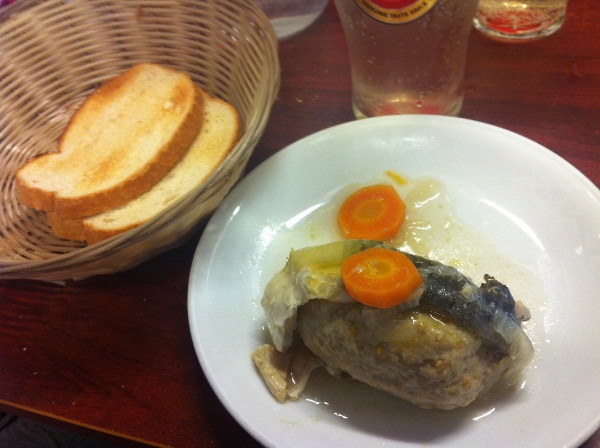On foot from Jisr az-Zarka to Haifa, via Slovakia, Burning Man, Egypt, Sudan, a strip mall and a sub-tropical concentration camp.
As darkness falls on the first day of my journey, I am at a coffeeshop in Jisr A-Zarqa, smoking nargileh and speaking to the friendly owner Hamis and to his equally friendly clientele. On television, an old Egyptian film is broadcast. “You’ve gone into another world,” says Dib, a regular.
“Several by now,” I reply.
But Jisr is truly another world, distinct even from other Palestinian towns. Its people come from a wetland area in Sudan. They were brought here to look after a bridge that used to link Acre with Jaffa. Maintenance of the bridge became impossible due to the presence of Anopheles mosquitoes. Being marsh dwellers, the Sudanese developed a natural immunity to malaria and could dwell in the area.
They were brought over. Later the bridge vanished, then the swamps. They remained, although, as you could tell from the photos concluding the previous post, they haven’t really prospered. WiFi isn’t common here. I need to head out of town in order to post Part Two of the series. Hamis suggests some random strip mall near Zichron Yaakov, but to reach it I must walk inland for forty minutes in the dark.
As I walk I think of roots. Being an Israeli who does not take the Bible at face value, I often feel not fully entitled to my own native land, since it was not the native land of my grandparents, but are others indeed more entitled then us? Israelis often present the Palestinians as a mix of nations that have rather recently assembled on this soil. Is Jisr really an anomaly? And if it is, does that make a difference?
The strip mall has no roots. I could swear it wasn’t here the last time I looked. It does have WiFi, though, and the post goes online. By the time I’m done, it’s nearly midnight and I need to find a place to sleep. I step into the dark vinyards surrounding the mall. Not feeling quite comfortable about tenting on the hard soil, but the beach is far and I don’t see much of an alternative.
Just then the phone rings. It’s a Tel Avivian friend asking if I would join him for a tour of East Jerusalem tomorrow. When I tell him where I am, he remarks that the Israeli “Burning Man” festival is taking place tonight on a beach not ten miles from where I stand.
Wha..?! I rush out of the vineyard to the road and instantly catch a lift with two young soldiers on leave, who are equally thrilled by the concept. “Burning Man,” of course, is difficult to imitate, and what we find on the beach is more of a rave paying tribute to the famed American explosion of desert anarchy, but there’s nothing really wrong with that.
Being neither fond of electronic music nor equipped with the kind of substances that make people fond of it, I head for the tents, where young people play guitars and pass joints around bonfires. What are the roots of this society? The ones that show at the moment are deeply sunk into American and European youth culture. Could we ever meet the Egyptian film enthusiasts of Jisr halfway?
I go to sleep on a white beach beautifully illuminated by a large moon, and wake up to find it was invisibly filthy.
It’s not the fault of the environmentally conscious “Burning Man” kids, but of others, many others. Why do Israelis tend to be so careless towards the environment? Does it have to do with our lack of long lasting connection with the land? I decide that this is a dubious hypothesis, considering that Palestinians tend to be equally careless and probably account for some of this disaster as well. It must be something in our polluted air, or in the polluted water, and certainly in our polluted education, and yet…
No place is better to explore the question of roots than the next town up the coast. It is in Atlit that my grandfather, Shmuel Ben-Ami (originally Reichman) was incarcerated for an entire year by British authorities, after arriving on these shores as an “illegal immigrant.” That year was 1940. No European Jew was an “immigrant” in 1940.
As soon as I reach the first houses of Atlit I am struck by how much they resemble the houses in my grandfather’s native town in southern Slovakia. Does his spirit linger here?
His family certainly lingers here.
This is my cousin Yaron and his wife Shir, in “Israeli Gothic” position. Their two brilliant kids are over at the grandparents’, and they have plenty of time to drink an idle glass of lemonade with me, help me heal my sunburns with freshly cut aloe vera from the yard and chat about a million things. Yaron is, among other things, a history teacher, a translator, and a fantastic blues musician. Shir is a graphic artist and animator. Together they make grand company for visiting a concentration camp.
This is indeed where we head on this fine holiday. The Atlit internment camp for illegal immigrants, and yes, it does look exactly like a subtropic Dachau. Both camps were built at about the same time, and both received their inmates in cattle cars.
Atlit camp, however, was not the site of atrocities. Our granfather left a very short testimony for the museum’s history archives. He wrote of his year behind fences: “It was the most boring period of my entire life.” This is despite the fact he passed some of his time being the bartender at the officers’ club.
At the historian’s office, Yaron and I try to shed more light on his story. The historian tells us that he arrived on a ship named “Libertad,” which was so packed with refugees and so filthy that the Brits wouldn’t touch those who disembarked. We know from our grandfather, who was 19 years old at the time, that he came ashore (and was instantly arrested) wearing only shorts, a long coat and glasses with one lens missing. He had been sharing a toothbrush for months with his best friend.
He was sent over by his parents when the war began, to prepare the ground for the escape of the entire family. They never made it. All five siblings and both parents were murdered. Our grandfather never forgave himself for being the only one who survived. He did everything he could to keep their memory alive. The home he built with our grandmother Shulamit was full of the beauty and poetry of tradition. These are our roots. They stretch from here to Southern Slovakia, to Hungary, to Poland and the Ukraine, and they manage to nourish our spirits across the distance, across time, and despite the unbelievable loss.
I remember when the entire family visited my grandfather’s hometown. One old lady still remembered him by his original Hungarian name, Mitiu. She sat in the yard on a wooden chair. She was unbelievably old. Her chin and nose nearly touched. She said she thought the Reichmans were all gone. My grandfather showed her all of us, the living branches of a tree that was felled.
But how can branches grow like that? How is that at all possible? And how healthy will they be? As the three of us travel north to Haifa for a decent lunch, I ponder the mystery of the Reichmans.
Again we are at “The Fountain of Beer,” where I feasted on the Christmas journey. This time, in honor of Saba Shmulik and Savta Shulamit, we order not only the inevitable pork ribs (accompanied by bread, despite the holiday), but also something closer to home.
Yaron talks about Palestinian and Israeli history. He regards both nations to be immigrant societies, nearly to the same extent, and even dates the beginnings of their presence in the holy land at about the same time: The early 18th century.
The story he tells begins with 13th century Mamlouk leader Baibars, who “did his best to turn this country into a hellhole.” Baibars was worried about the crusaders returning, and in order to make the country less attractive in their eyes, demolished the coastal cities to the last.
The holy land remained derelict until, five centuries later, Bedouin ruler Daher Al-Omar begar reconstructing the city of Acre and founded other cities, including Haifa itself. The population grew steadily. Marsh dwellers arrived from Sudan, Bosnian Muslims fled Austrian rule and settled only three miles or so to the south of them. Ukranian Jews arrived in Jerusalem, hoping to receive the resurrected, false Messiah Shabtai Tzvi. Sephardic Jews moved in from Turkey to Tiberius, Egyptian Muslims founded the town of Salame, near Jaffa. We could have been the same nation today, had it occurred to us at the time.
I like this story. Even a dead land can sprout into life, so long as someone remains among the ruins to see to it. Even a dead family can have a continuation, as long as one seed of the tree remains hidden in the ground. As we leave the restaurant we pass posters featuring eggs and Jesus. Today is Easter Sunday.
How precious the concept of resurrection is, in this land of destroyed olive groves and vanishing legacies. Is it any wonder that this what we all do? Whether we are Israeli or Palestinian, we all try to resurrect something, be it our heritage, our trampled liberty, or a lost sense of home. Sometimes we produce zombie-like creatures, bearing scars of memories and original ideas despicably exaggerated and deformed. Sometimes we say “Oh, to hell with it” and go imitate “Burning Man,” and then sometimes, only sometimes, we succeed, and the dead trees grows branches, and they give leaves, and fruit, and shade.
Thanks for reading and taking part in the adventure. All writing on this site is done voluntarily, so if any of you would like to pitch in directly for my travel expenses, please click here or on the “donate” button at the top of this page to do so. I’m deeply grateful to those who already donated. Thank you so much! This project would be impossible if not for you.
Relive the first two journeys:
The September Journey
The Christmas Journey













